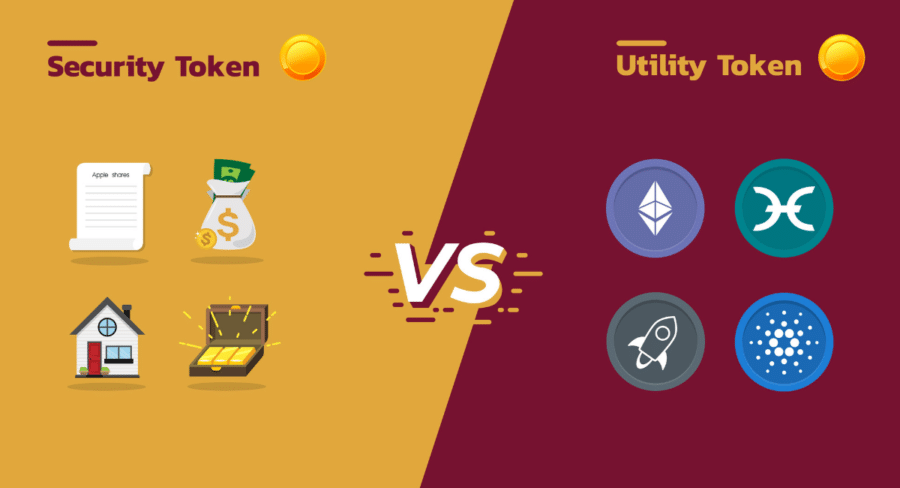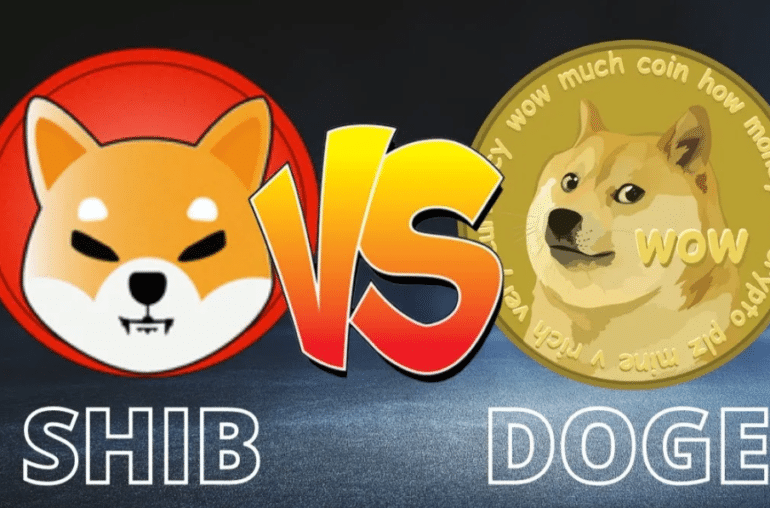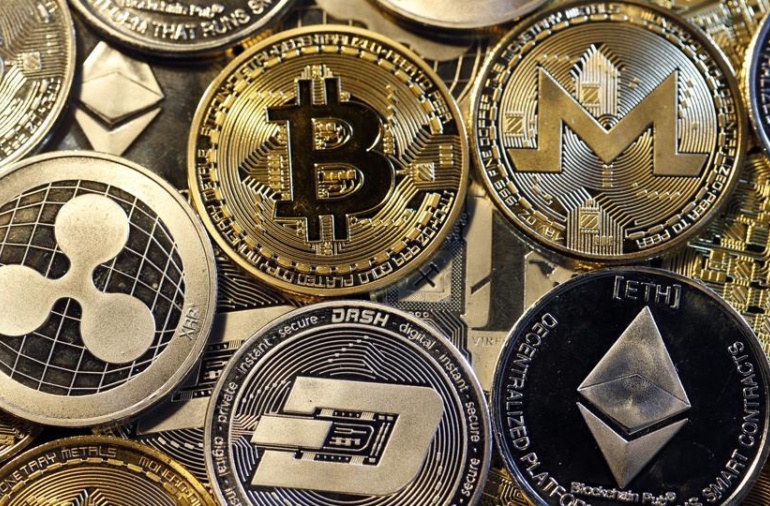Significant disruption is occurring in virtually all existing sector verticals due to blockchain technology. With the help of blockchain technology, it is possible to develop a wide range of new business models. Decentralization and trustless networks are credited to blockchain technology as being the most significant advancements since the advent of the internet.
In addition to many other factors, tokens have been a key component in the success of blockchain technology. We will examine the idea of tokens and assist you in understanding security tokens, utility tokens, and how to choose the correct NFT token for your needs. As you learn more about these tokens, you will also see how they differ.
A brief overview
It is typically ambiguous in terms of its name and terminology to refer to the blockchain. When discussing tokens, coins, and cryptocurrencies, most people assume they are all the same. However, they all have unique capabilities, which set them apart. Tokens come in a few varieties.
This article will discuss all three types of tokens: NFTs, utility tokens, and security tokens. Unlike utility tokens, security tokens are investments used to purchase goods and services. As opposed to fungible tokens, non-fungible tokens are collectible and rare. A form of art in which creators receive payment for their work. Pricing for NFTs is significant and has tremendous potential.
This article examines each of these tokens in-depth and how they are used in the blockchain industry.
Understanding Tokens
Any cryptocurrency token or token present on another coin’s blockchain is referred to as a token in computer security and cryptocurrency. Tokens are products, services, or value measures issued by businesses.
Using a distributed ledger and a smart contract, tokens are programmable assets or access rights. Initial Coin Offerings (ICOs), which are similar to Initial Public Offerings (IPOs), are distributed when businesses make an Initial Coin Offering. However, IPOs and ICOs are fundamentally different in that, with the former, you receive shares, and with the latter, a token. As a result, using tokens to gain access to a company’s products and services in the future is possible.
How Do ICOs Work?
Initial coin offerings, or ICOs, are referred to as initial coin offerings. It would be like an IPO for cryptocurrencies. Crowdfunding is the primary purpose of ICOs for investors and entrepreneurs. A new initiative could be funded through an ICO if developed by a developer.
Decentralized applications (DApps) might be involved. For investing in a particular ICO, investors will receive a token in exchange for their investment. In the future, when the business becomes profitable, investors would earn a great deal from their initial investment.
ICOs: how do they work?
Let’s look at the ICO’s operation in plain English. First, a variety of tokens are distributed by the creators for a limited period. Then, these tokens are compared to other cryptocurrencies, such as ether, in terms of their value. Finally, investors use cryptocurrency to purchase the tokens of specific projects. To put it another way, ether will be traded for tokens. Because most DApps are based on Ethereum, the transaction happens quickly and smoothly.
In addition, security plays an important role in determining the success rate of ICOs. In the event that a transaction passes all security checks, the allocated number of tokens is distributed evenly among the investors. It depends on the sort of token you invest in, whether it is a utility token, a security token, a collectible token, a reward token, an asset token, or a currency token.
In addition, the creators have secured funding for the project. As a result, investors may be able to profit from the tokens. A situation like this is similar to one where everyone benefits. You should know what you are getting in return for your money when investing in digital tokens, as it can be a rollercoaster ride.
What is the process of creating a security token?
Digital assets known as security tokens derive their value from external assets, such as exchangeable currencies. Therefore, they are subject to federal security laws. These guidelines must be followed to ensure the correct functioning of security tokens. There would be serious repercussions if the project did not comply, including penalties and potential derailment.
In these cases, assets include rights to receive interest or dividend payments or participation in underlying earnings streams that are real and tangible. Their role in the economy is the same as that of bonds, derivatives, and stocks. Businesses can use security tokens for a wide range of purposes, provided they comply with legal requirements. In addition to being known as “securitized tokens,” the Security Token Offering (STO) aims to increase investor confidence and encourage investment in different projects.
- Data is stored on security tokens to validate identities electronically.
- A security token is issued by Security Token Services (STS), which confirms an individual’s identity.
- Using these in place of or along with passwords to establish the owner’s identity is possible.
- It is possible to lose, steal, or otherwise not secure security tokens.
Security Tokens: How Do They Work?
It is possible to invest in security tokens. The token holders receive dividends every time the corporation that issued the tokens makes money in the market. Additionally, security token holders will receive ownership rights to the business. A voting system built on blockchain could give investors a voice in how the firm makes decisions.
Cryptocurrency tokens are evaluated using the Howey Test, determining if they qualify as security tokens. There is an outside tradable asset that gives them their value. Because these tokens are securities, federal securities laws apply to them.
As deemed securities under the Securities Act of 1933 and Securities Exchange Act of 1934, certain transactions must comply with specific disclosure and registration requirements if they meet the criteria of being “investment contracts” under the Howey Test. In the United States, Security Tokens are governed by regulations such as these:
- Regulation D
A specific offering can avoid registration by completing the SEC’s Form D after selling the securities. A person selling this asset may request investor offers in accordance with Section 506C. This paragraph needs to be verified to verify the investors’ accreditation and the accuracy of the information in the solicitation.
- A+ Regulation
Through this program, a developer may solicit up to $50 million in investments from non-accredited investors. In addition, registering the security may take longer than other solutions if the deposit needs to be registered. As a result, this regulation will be more expensive than any alternative.
- Regulation S
In accordance with this rule, securities offerings outside of the United States are not required to register under section 5 of the 1993 Act. To be put to death, the designers must still adhere to the national security laws.
What are Utility Tokens, and How Do They Work?
Tokens that are used by users or app coins are utility tokens. As part of a project’s ICO, this cryptocurrency is distributed through crowd sales. By developing utility tokens, a business is essentially developing a type of digital coupon, which may be used to obtain preferential treatment in the future.
Unlike security tokens, utility tokens can, with the right setup, be excluded from federal securities laws, so they are not used as investments. There are a number of digital assets that can be considered utility tokens, including Filecoin, Siacoin, Civic, and others.
Functions of Utility Tokens
- Owners of tokens have the right to use or own products, propose or vote on certain instances or themes, etc.
- Having utility tokens allows you to store things independently. Those tokens serve as the exchange value for the services they provide.
- Incentives are also provided to encourage users to take certain actions.
- Utility tokens are used as money on the blockchain. Therefore, financial payments may also be replaced in the upcoming years.
- Different goods can be gained and shared using utility tokens.
- Payment is required for access to the blockchain infrastructure or the decentralized service.
- As outlined above, utility tokens can fill six roles, and we will cover each role in more detail below.
Problems and Challenges with Utility Tokens
Utility tokens can be used to raise money for newly emerging projects and to secure funding. Although there are risks involved, they may also be worth taking. In 2017, utility tokens gained popularity as a result of the ICO boom. Unfortunately, utility token mechanisms were overused, which contributed to this problem.
The following year, this factor brought them down, resulting in issues with trust and ongoing audits. Among the main reasons for the fall were the unattainable goals of the projects and the tokens’ lack of regulation when compared with security tokens. As a result, the project must be useful.
To raise the token value, there is no organic process.
- In the event of a project failure, a token is worthless.
- The adoption of cryptocurrencies is discouraged.
- Lack of funding can lead to liquidity issues for a project.
- Token owners do not have any decision-making power. Instead, the founders and engineers manage all of them.
What is NFT Token?
A particular type of collectible token is a one-of-a-kind item called a non-fungible token. As well as writing, it might be a meme, a video, merchandise, a movie, a rank, or a movie trailer. There is no substitute for this type of digital art. Blockchain technology is a digital ledger in which some tokens are stored.
NFT cannot be traded like bitcoin, where one may exchange it for another and receive another in exchange. On the blockchain of Ethereum, the NFT is constructed. Any number of copies of NFT is permissible. However, NFT grants ownership of the creation to the person who generated an NFT Token, and that artwork may be purchased for a very high price.
Top NFT Tokens to think about
Below are some of the top NFT tokens to think about purchasing this year:
- Defi Coins DeFi (DeFi)
- Theta (THETA)
- Chiliz (CHZ)
- Tezos (XTZ)
- Decentraland (MANA)
Utility tokens vs. security tokens
To distinguish security tokens from utility tokens, the following criteria may be used:
Purpose
Tokens representing ownership rights to tangible or digital assets are called security tokens. In a blockchain-based project, utility tokens aid in financing initial coin offerings and facilitate the establishment of an internal economy. Furthermore, utility token holders have certain voting rights within the ecosystem.
The expectations
As a result, a security token correlates directly with a company’s value—the value of the token increases as the company’s value increases. Currently, a utility token’s value has no relationship with a company’s market capitalization.
The potential for a scam
As a result of their strict regulation, security tokens are virtually impossible to scam. However, con artists produce fake ICOs and tokens to generate quick cash because utility tokens are poorly regulated.
Regulatory Framework
It is exceedingly difficult to set laws for ICOs since utility tokens are primarily unregulated. Howey tests are required for firms and investors in Security Tokens.
Conclusion
We really hope that this article has clarified the critical distinctions between security tokens, utility tokens, and NFT tokens. The first serves as a motivation for holders to behave a certain way, while the second is a contract that indicates legal ownership.
As a result of the stringent rules placed on security tokens, they are perceived to be safer than utility tokens. But, on the other hand, NFT tokens are presented as unique, valuable digital objects. You can read more articles about blockchain at Blockchain Council.
***





